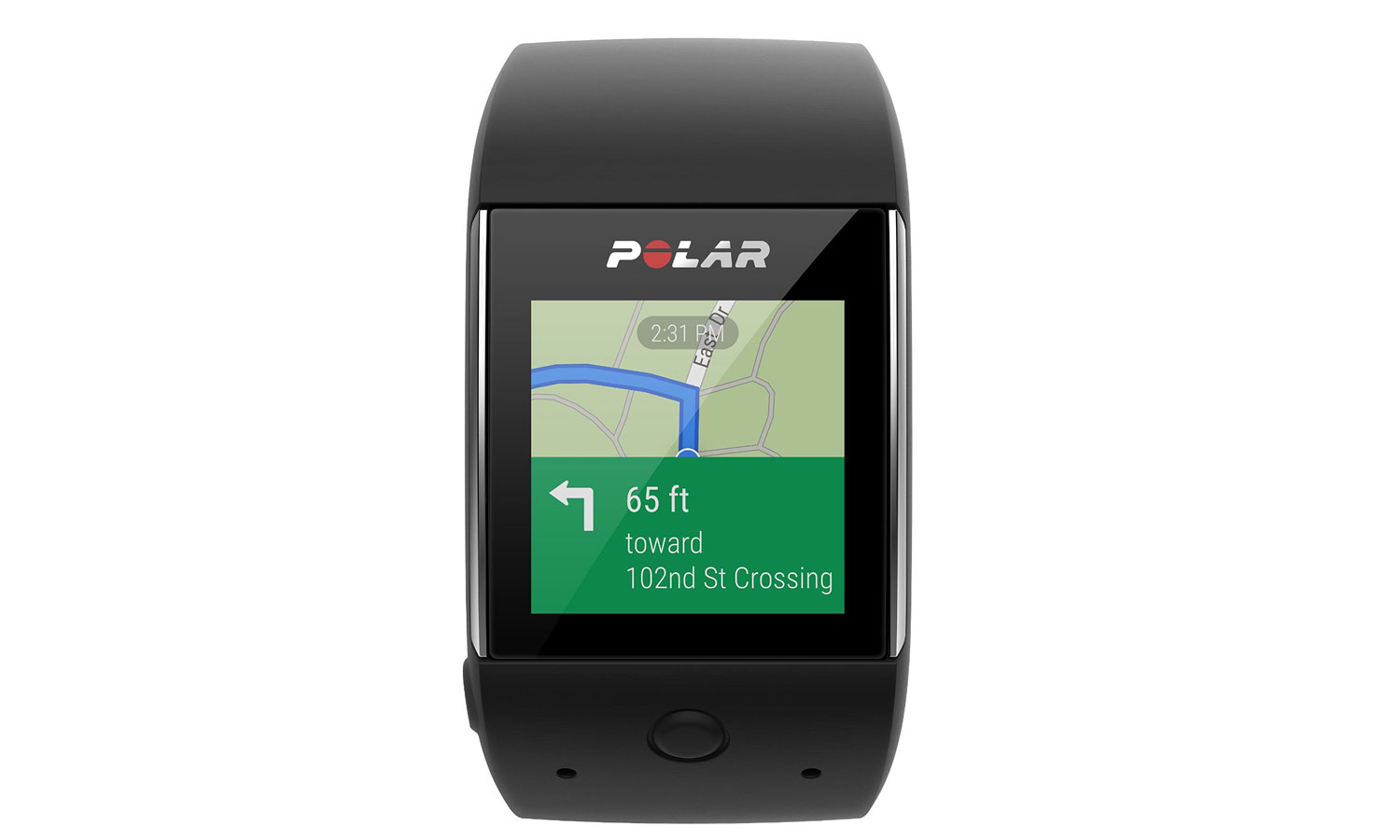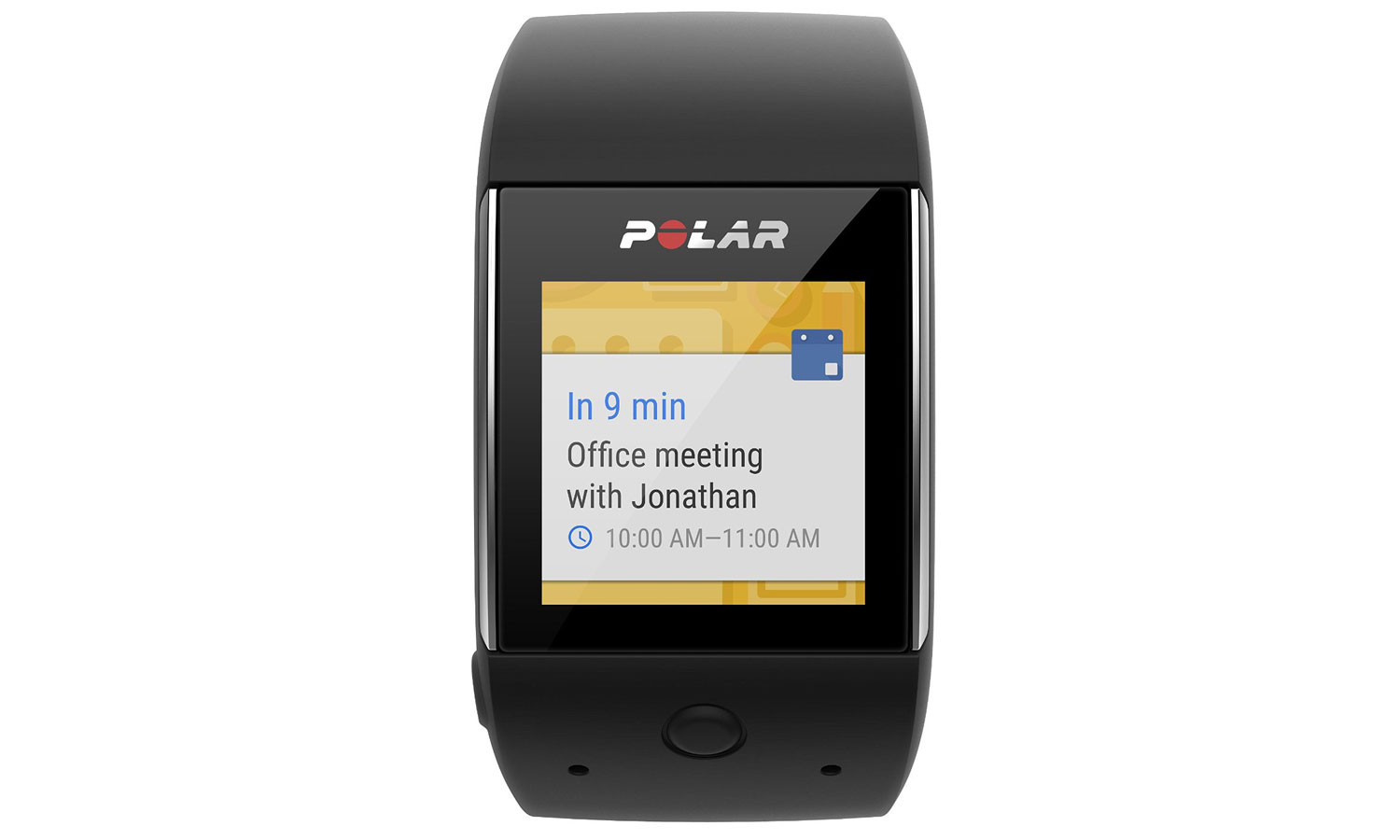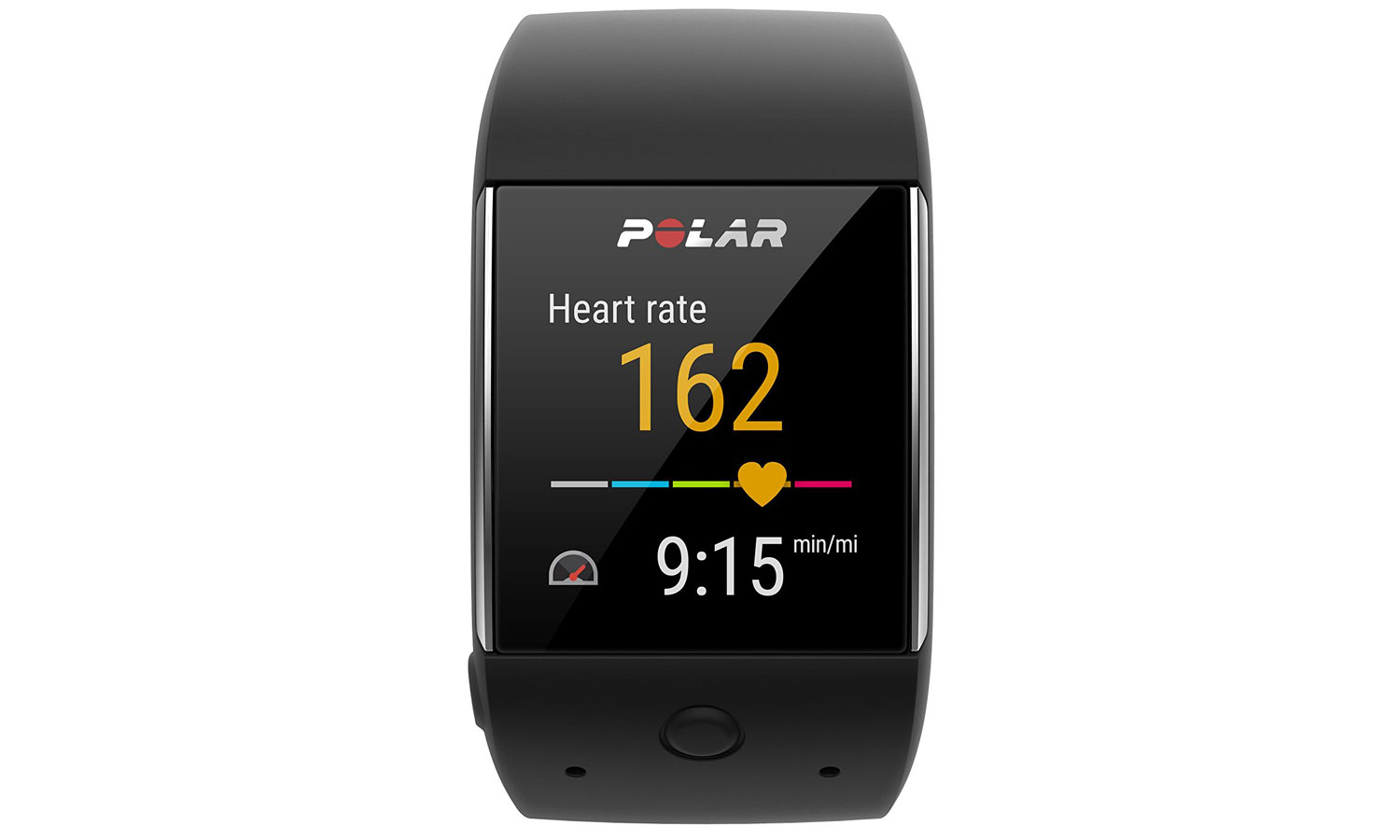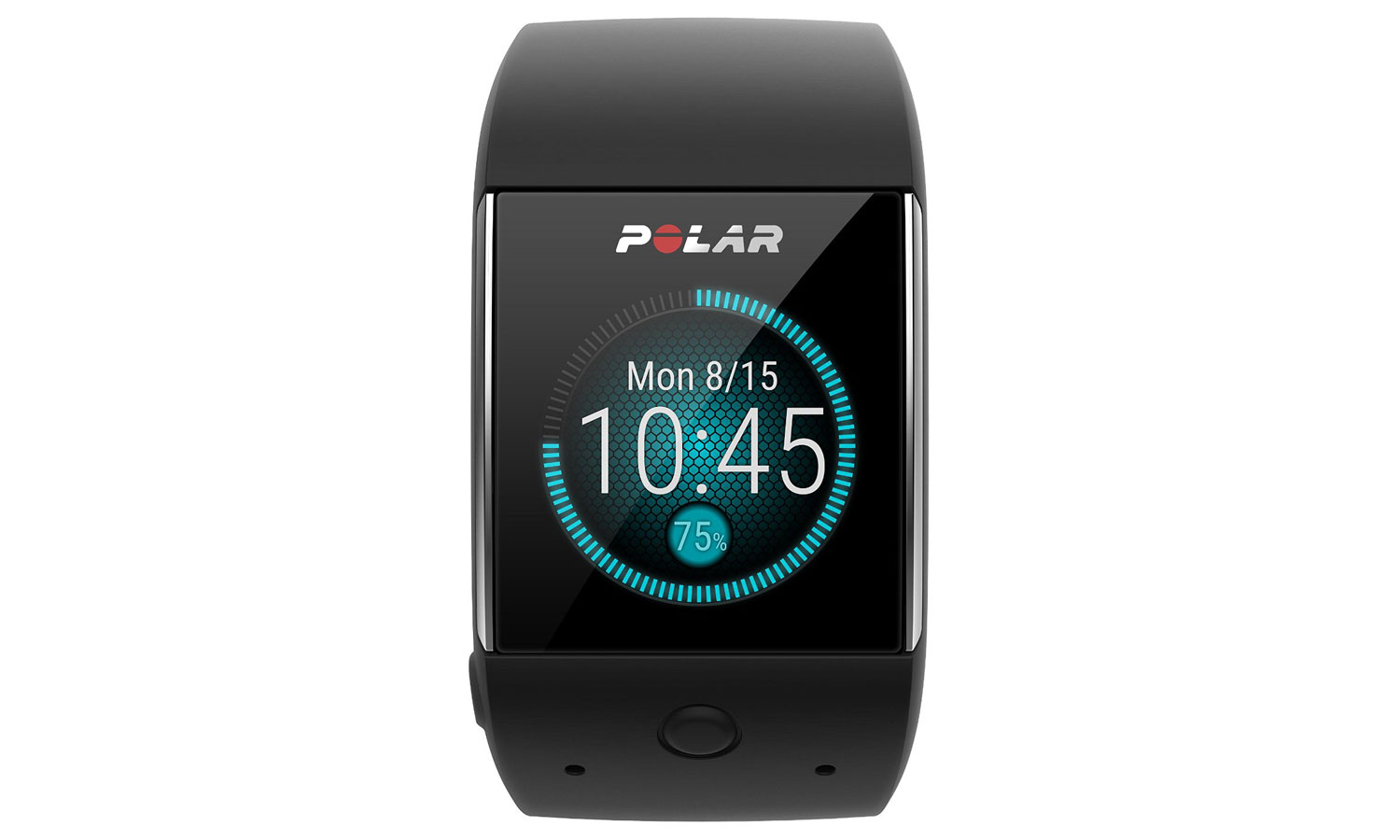Tom's Guide Verdict
The Android Wear-powered Polar M600 is good as a smartwatch, and has built-in GPS, but itꞌs not a great running partner.
Pros
- +
Smartwatch notifications
- +
Accurate GPS, heart rate monitor
- +
Easy-to-use Polar Flow app
Cons
- -
Bulky
- -
Disappointing activity features
- -
Short battery life
Why you can trust Tom's Guide
The latest running watch from Polar, the M600 ($329.95), bills itself as a "sports smartwatch." Powered by Android Wear, this wearable enters an increasingly crowded market that includes the Moto 360 Sport as well as GPS watches with smartwatch-like functionality, such as the Garmin Forerunner 235. While the Polar M600 is a very good smartwatch, and the accompanying Polar Flow app is well-organized, it leaves a lot to be desired as a running watch.
Design
With a square design, a stylish strap (available in black or white) and only two buttons, the Polar M600 looks like a smartwatch. The screen is large, 240 x 240 pixels, and displays several lines of text at a time. Instead of simply seeing a notification, you get enough context to see if you should respond right away.
The size is a pitfall, though. The watch weighs nearly 2.3 ounces, which is more than the Moto 360 Sport (1.9 ounces) and the Garmin Forerunner 235 (1.5 ounces). It's heavy enough that I felt it moving on my wrist while I ran, especially during a fast track workout ― to the point that I was self-conscious about it. (This was less of an issue when cycling, since my hands weren't moving.) The heart rate monitor on the underside of the Polar M600 sticks out more than the HRM on the Forerunner 235 or the Fitbit Surge (my everyday watch), so the Polar will probably snag on long sleeves.

The M600's main power button is on the bottom of the left side, and the start button is below the watch face. Both buttons are covered by the watch band, which helps keep dirt and water from getting in. Having taken a toothpick to my Fitbit Surge to clean out the junk, I appreciate this design feature.
The Polar M600 is suitable for swimming up to a depth of 10 meters and will track swim workouts, though you first need to go into the Polar Flow app and add swimming to the list of main workouts available from the watch's activity menu. This is a step up from the Moto 360 Sport, which is not waterproof, and the Garmin Forerunner 235, which is waterproof to a depth of up to 165 feet, but does not track swimming. I didn't take the Polar M600 for a swim, but I did wear it in the shower.
MORE: Smartwatch Buying Guide: Everything You Need to Know
Setup
The Polar M600 runs Android Wear OS, which is compatible with Android smartphones running version 4.3 or higher of the mobile operating system. (I tested the watch on a 16GB Samsung Galaxy S5.) The watch is also compatible with iPhone 5 or later, running iOS 8.2 or higher, but pairing the Polar M600 with an iPhone limits the smartwatch capabilities.

All told, setup involves several steps: Charge the Polar M600, download Android Wear, sync the watch with Android Wear, download Polar Flow, create a Polar account and sync the watch with Polar Flow. This takes at least 10 minutes, not including charging time. (In my case, the battery was about two-thirds charged out of the box and took about 30 minutes to get to 100 percent.) In other words, don't plan on unboxing the watch, strapping it on and heading out the door.
Daily Use
In the default watch display, a small graphic appears at the bottom of the watch screen showing your step count, and a thin blue line rises from the bottom of the watch face to the top. Once you achieve your daily step goal, the entire display is light blue.
Thanks to its integration with Android Wear, the Polar M600 is a fine smartwatch. You can use Google Now voice-to-text to respond to a text message or a Google Hangout message, as well as perform a Google Search. The watch syncs with any apps that send notifications to your Android phone, including your calendar. Through Android Wear and the Google Play store, you can download apps to the watch.
If the notifications get to be too much, you can put the watch in Do Not Disturb mode or mute notifications using Android Wear.
Activity Use
The Polar M600 will capture data for up to 120 activities, from running and bicycling to group exercise and dance. Through the Polar Flow app, you can select up to 20 activities for your "sport profile"; these are the activities you can choose from when you enter training mode on the watch.
To select an activity, you hit the button below the watch face, scroll to the desired activity, and tap the icon on the screen. And this is where the Polar M600 starts to show its shortcomings. Once you tap the icon, the clock starts. On every other running watch I have used, this is a two-step process ― select the activity and then start the clock. This gives you a chance to stretch, catch your breath or let the watch find a GPS signal.

Instead, the Polar M600 forces you to go to the activity screen, wait for a GPS signal and then tap the icon for the desired activity. It took only about a minute to find a signal, but the whole process felt backwards, and it threw off my routine.
The Polar M600 was disappointing during a run as well. It vibrated at every lap, which is something the Moto 360 Sport, the Garmin Forerunner 235 and the Fitbit Surge all do — but it measured laps in kilometers and not miles, even though I had set my preference to imperial units of measurement in Polar Flow. Turns out, you need to adjust the settings elsewhere, too. More on that below.
In addition, the screen went dark once I started running. If I wanted to see any data —distance, pace, time or heart rate — I had to either tap the screen or shake my wrist, neither of which is easy in the middle of a run. The screen remains lit for only a few seconds, which was barely enough time to see the data. As someone who looks at his watch several times even during a short, easy run, this annoyed me. According to Polar, a future update may allow for the screen to remain on during a workout; the company did the same thing with its A360 watch.
After a run, the Polar M600 displays a run summary, which includes distance, time and pace. You have to act quickly to view this information, though. As soon as I was within range of my phone, the watch started displaying my smartphone notifications, and I couldn't get the run summary back. This isn't a big deal, as it's easy to view run data in the Polar app, but it's more proof that the Polar M600 is more smartwatch than running watch.
MORE: Best Fitness Trackers for Running, Swimming and Training
App
All data from the Polar M600 is synced with Polar Flow. (This is not to be confused with Polar Beat, the smartphone app that measures activity and syncs with Polar's chest-strap HRMs.)
Polar Flow is easy to navigate, much more so than Garmin Connect. Training data is available from the app's main menu, and the screen for each activity shows the most important information at a glance: Duration, distance, pace, calories and heart rate.
The app divides a run into 1 KM laps, which I found odd because I had set miles as my default unit of measurement in Polar Flow's general settings. According to Polar, you also need to change the value of your lap distance within Polar Flow's individual sport profiles, which changes how the watch collects data as you run. Although I understand that the additional step is necessary, as the app itself is simply displaying the information that it gets from the watch, it nonetheless makes for a confusing process.

Beyond training activity, the Polar Flow provides a snapshot of your everyday activity, which includes time spent resting, sitting and participating in low-, medium- and high-intensity activities. Low intensity is standing or doing light household chores, medium intensity is walking, and high intensity is walking, bicycling or other such exercise.
Accessing Polar Flow in the browser offers access to additional training data, such as recovery status, and once you wear the device for more than 21 days, an assessment of activity benefit. Polar also offers training programs for 5K and 10Ks, along with half and full marathons. The programs are tailored to how often you train, how long you train per session and the intensity of those training sessions.
Accuracy
The heart rate monitor on the Polar M600 is very accurate. On a 45-minute run, it measured the same average heart rate as a Polar H7 chest-strap HRM (140 beats per minute) and was very close to the maximum heart rate (180 from the watch, compared with 177 from the chest strap). Although this isn’t surprising given Polar's expertise in HRM technology, it's nonetheless impressive for a watch.
The Polar M600's accuracy in measuring runs was also impressive. One run that measured 4.48 miles on the M600 was 4.52 on my Fitbit Surge and 4.54 on MilerMeter. Another measured 4.06 on the M600, compared with 4.13 on my Fitbit and 4.12 on MilerMeter.
Battery
Polar says the M600's 500mAh battery will last two days, with 8 hours of training, when paired with Android Wear. For iPhone pairings, it's one day and 8 hours of training.
In my experience, this did not measure up. I put on the watch at 1 p.m. with a full battery. Eight hours later, after a 40-minute run and with notifications and location services on, the battery was down to 20 percent. I put the watch in Do Not Disturb mode to conserve the battery for the remainder of the night.
Later in the week, a 45-minute run (with notifications enabled) drained the battery from 53 percent to 36 percent. For a watch meant to be worn all day and used to track sleep, this is disappointing.
MORE: Fitness Tracker Buying Guide
This endurance is about the same as the Moto 360 Sport, which has a 300 mAh battery, and far less than the Garmin Forerunner 235, which can go more than a week between charges. Plus, it takes about 2 hours for the battery to fully charge.
Bottom Line
Overall, the Polar M600 looks and behaves more like a smartwatch and less like a running watch. The integration with Android Wear is slick, and Polar Flow is a clean and easy-to-use app, but the watch falls short of expectations once you start running. It's a good option for an Android smartwatch, but the Garmin Forerunner 235 ― which is the same price, but has a slimmer design, an always-on screen and a longer-lasting battery ― is a better running watch, and can help boost your performance, especially when coupled with a pair of the best running shoes.
Brian Eastwood is a freelance writer for Tom’s Guide, focusing primarily on running watches and other wearable tech. Brian has been a professional writer and editor since 2003. He has covered healthcare tech, enterprise tech, higher education, and corporate leadership for a range of trade publications. Brian is a lifelong Massachusetts native and currently lives outside of Boston. Outside of work, he enjoys running, hiking, cross-country skiing, and curling up with a good history book.


